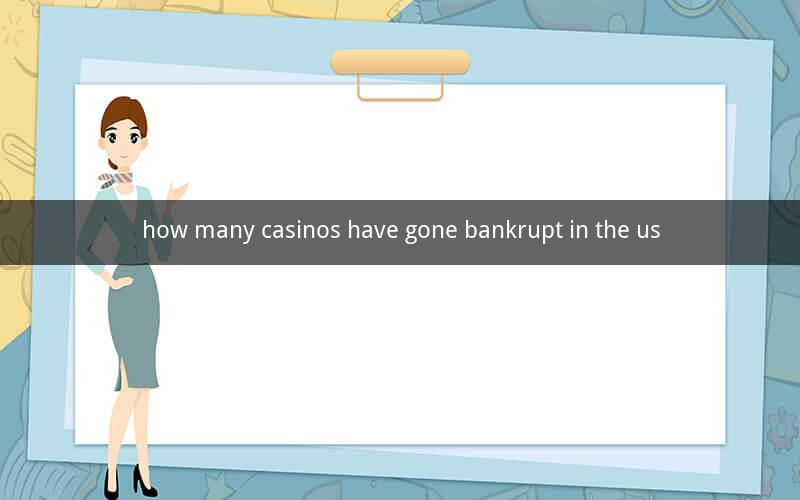
Table of Contents
1. Introduction
2. The Rise of Casinos in the United States
3. Factors Contributing to Casino Bankruptcies
4. Notable Casino Bankruptcies in the US
5. Lessons Learned from Casino Bankruptcies
6. Conclusion
1. Introduction
Casinos have long been a staple in the entertainment industry, captivating millions of visitors with the allure of fortune and excitement. The United States, in particular, has seen a significant growth in the casino industry, with numerous casinos sprouting up across the country. However, alongside this growth, there have been instances of casino bankruptcies. In this article, we will explore the question of how many casinos have gone bankrupt in the US, examining the factors contributing to these failures and drawing lessons from notable cases.
2. The Rise of Casinos in the United States
The casino industry in the United States has a rich history, with the first legal casino opening in Nevada in 1931. Since then, the industry has experienced exponential growth, particularly in states like Nevada, New Jersey, and Mississippi. The allure of gambling has drawn both locals and tourists alike, leading to the construction of numerous casinos across the country.
3. Factors Contributing to Casino Bankruptcies
Several factors have contributed to the bankruptcy of casinos in the United States. Some of these include:
a. Economic downturns: Economic recessions have had a detrimental impact on the casino industry, as consumers tend to cut back on discretionary spending during tough times.
b. Overexpansion: Many casinos have fallen victim to overexpansion, leading to excessive debt and operational challenges. The construction of lavish resorts has often proven to be a recipe for financial disaster.
c. Competition: The intense competition among casinos has led to a decrease in profits for some operators. Increased competition can erode customer loyalty and reduce revenue streams.
d. Poor management: In some cases, poor management decisions have contributed to the downfall of casinos. Issues such as mismanagement of finances, inadequate marketing strategies, and insufficient staff training can all lead to bankruptcy.
4. Notable Casino Bankruptcies in the US
Several notable casinos have filed for bankruptcy in the United States. Some of these include:
a. Trump Taj Mahal: Once one of the most luxurious casinos in Atlantic City, the Trump Taj Mahal filed for bankruptcy in 2014 and closed its doors permanently in 2016.
b. Revel Casino Hotel: The Revel Casino Hotel, another Atlantic City landmark, filed for bankruptcy in 2014 and closed its doors in 2015.
c. The Sands Casino Resort: The Sands Casino Resort in Atlantic City filed for bankruptcy in 2014 and was subsequently sold to a new owner.
d. The Fontainebleau Miami Beach: The Fontainebleau Miami Beach, a luxurious hotel and casino, filed for bankruptcy in 2014 but was able to restructure its debt and continue operations.
5. Lessons Learned from Casino Bankruptcies
Several lessons can be learned from the bankruptcy of casinos in the United States:
a. Risk management: Casinos must carefully manage risks, including economic downturns, overexpansion, and intense competition.
b. Strategic planning: Casinos should develop comprehensive strategic plans to ensure long-term success, including diversification of revenue streams and effective marketing strategies.
c. Financial prudence: Casinos must exercise financial prudence, avoiding excessive debt and maintaining a strong balance sheet.
6. Conclusion
The casino industry in the United States has seen its fair share of bankruptcy cases. Understanding the factors contributing to these failures and drawing lessons from notable cases can help casinos avoid similar pitfalls. By implementing effective risk management strategies, strategic planning, and financial prudence, casinos can increase their chances of long-term success.
Questions and Answers
1. How many casinos have gone bankrupt in the US?
Answer: The exact number of casinos that have gone bankrupt in the US is difficult to determine, as it can vary over time and is subject to change. However, it is estimated that hundreds of casinos have filed for bankruptcy since the industry's inception.
2. What are the main factors contributing to casino bankruptcies?
Answer: The main factors contributing to casino bankruptcies include economic downturns, overexpansion, competition, and poor management.
3. Why did the Trump Taj Mahal file for bankruptcy?
Answer: The Trump Taj Mahal filed for bankruptcy due to a combination of factors, including high debt levels, increased competition, and a struggling economy.
4. How did the Revel Casino Hotel contribute to its own bankruptcy?
Answer: The Revel Casino Hotel's bankruptcy was a result of a combination of factors, including high construction costs, excessive debt, and a declining customer base.
5. What lessons can casinos learn from the Fontainebleau Miami Beach's bankruptcy?
Answer: Casinos can learn that it is crucial to maintain a strong balance sheet, exercise financial prudence, and effectively manage debt.
6. How does economic downturn impact the casino industry?
Answer: Economic downturns can lead to a decrease in consumer spending, as individuals cut back on discretionary activities like gambling.
7. Why is overexpansion a risk for casinos?
Answer: Overexpansion can lead to excessive debt and operational challenges, as casinos struggle to generate enough revenue to cover their expenses.
8. How can casinos effectively manage competition?
Answer: Casinos can effectively manage competition by diversifying their revenue streams, implementing innovative marketing strategies, and focusing on customer satisfaction.
9. What is the role of poor management in casino bankruptcies?
Answer: Poor management, including mismanagement of finances, inadequate marketing strategies, and insufficient staff training, can significantly contribute to casino bankruptcies.
10. How can casinos ensure long-term success?
Answer: Casinos can ensure long-term success by implementing effective risk management strategies, strategic planning, financial prudence, and a focus on customer satisfaction.